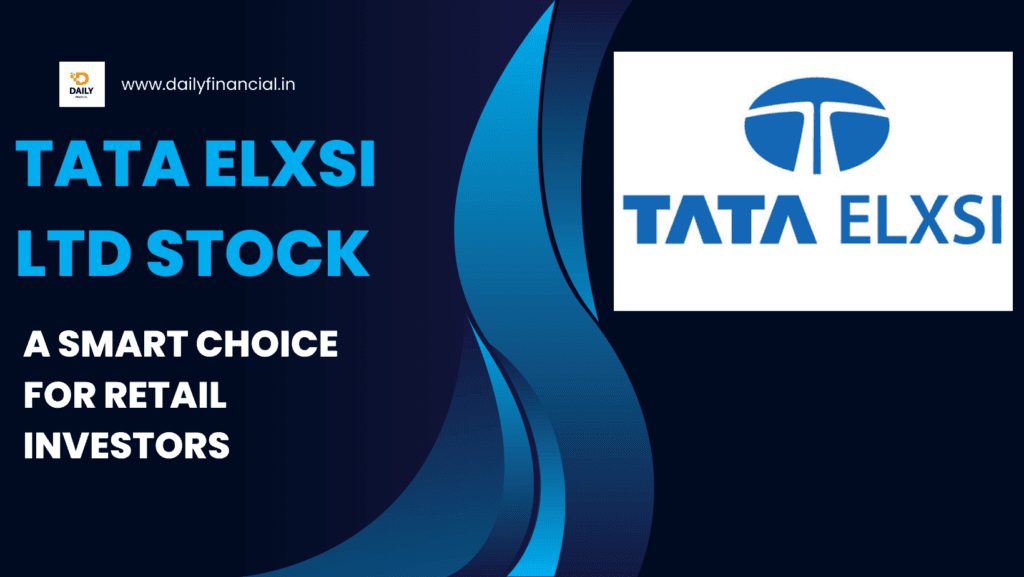
Indian Stock Market Trends: Exclusive 2025 Analysis & Actionable Insights for Today’s Investors
The pulse of India’s stock market on 11 September 2025! With Sensex and Nifty soaring, what drove the sixth day of gains? Dive into surprising sectoral shifts, top stock picks like Tata Motors and Infosys, and hidden risks threatening your portfolio. From record-low inflation to RBI’s bold moves, discover data-backed secrets to outsmart the market. Will Bank Nifty’s breakout spark a rally, or is a correction looming?
On Thursday, 11 September 2025, the Indian stock market showcased a vibrant performance, driven by a confluence of global economic signals, robust domestic fundamentals, and sector-specific earnings momentum. For millions of Indian investors—from the bustling financial hubs of Mumbai to the tech-savvy streets of Bangalore—this day offered a glimpse into the dynamic opportunities within the BSE Sensex, NSE Nifty 50, and Nifty Bank indices. With positive GDP projections, declining inflation, an accommodative Reserve Bank of India (RBI) policy, and improving employment data, market sentiment was buoyant yet cautious, reflecting the nuanced optimism of a nation on the rise.
This comprehensive Indian stock market analysis explores the day’s sharpest moves, sectoral strengths, economic triggers, and top stock recommendations, all tailored to empower equity investors aiming to outperform in 2025’s fast-paced market. From an Indian perspective, where family savings fuel dreams of wealth creation, this blog post offers data-backed narratives, fresh insights, and actionable strategies to navigate the complexities of the NSE and BSE.
Indian Stock Market Trends: 11 September 2025
Major Indices Performance
The Indian equity markets on 11 September 2025 closed with modest gains, marking their sixth consecutive session of upward movement. The BSE Sensex ended at 81,425.15, up 323.83 points or 0.40%, reflecting steady investor confidence amid global and domestic tailwinds. The NSE Nifty 50, representing India’s top 50 companies, settled at 24,973.10, gaining 104.5 points or 0.42%. Meanwhile, the Nifty Bank index, a key barometer of financial sector health, outperformed with a rise of 319.90 points or 0.59%.
These gains were fueled by optimism surrounding international trade talks, GST-driven consumption growth, and strong buying in sectors like information technology, banking, and automobiles. The consistent upward trend underscores India’s resilience as the world’s fastest-growing major economy, even as global markets grapple with uncertainties.
Nifty 50 and Bank Nifty: Technical Outlook
- Nifty 50: The index held firm above its critical support zone of 24,950–24,915, signaling potential for a pullback toward 25,200–25,250. Near-term resistance lies at 25,160, with support at 24,850. This technical setup suggests a cautiously bullish outlook, provided global cues remain supportive.
- Bank Nifty: The index continues to consolidate between 54,400–54,700. A breakout above this range could trigger a strong directional move, with support at 54,300 acting as a key pivot. Banking stocks’ resilience reflects strong fundamentals and investor trust in financials.
Volatility Snapshot
The India VIX, a measure of market volatility, edged up marginally by 0.53% to 10.84. This low volatility level indicates relative market stability, though it also hints at potential range-bound trading in the near term. For investors, this suggests a window for strategic stock selection rather than aggressive momentum plays.
Key Economic Indicators Driving the Market
GDP Growth: India’s Economic Engine
India’s economic growth remains a cornerstone of market optimism. In FY 2024–25, the GDP expanded by 6.5%, with Q1 FY 2025–26 recording an impressive 7.8% growth, cementing India’s position as the fastest-growing major economy, according to IMF and Fitch Ratings. Projections for calendar year 2025 estimate growth between 6.4%–6.9%, driven by structural reforms, global resilience, and robust domestic consumption. From infrastructure investments to digital transformation, India’s economic narrative is one of ambition and opportunity.
CPI Inflation: A Cooling Trend
Consumer Price Inflation (CPI) dropped to a remarkable 1.55% in July 2025, the lowest since 2017 and well below the RBI’s 4% ± 2% tolerance band. Easing food inflation and stable commodity prices have created a conducive environment for growth. If this trend persists, the RBI may consider further monetary easing, boosting market sentiment and encouraging investment in growth-oriented sectors like automobiles and consumer goods.
RBI Repo Rate: Balancing Growth and Stability
The RBI repo rate stands at 5.50% following a cut in June 2025, with a neutral policy stance. This accommodative approach reflects the RBI’s focus on fostering economic growth while keeping inflation in check. For investors, lower interest rates translate to cheaper borrowing for companies, particularly in capital-intensive sectors like infrastructure and manufacturing, making stocks like L&T attractive.
Unemployment Rate: A Mixed Picture
India’s unemployment rate paints a complex but improving picture. The World Economic Forum (WEF)-based measure cites a 2% unemployment rate, the lowest among G20 nations, as highlighted by the Union Labour Minister. However, the MoSPI PLFS data for 2025 reports a national average of 5.1%, with urban youth unemployment exceeding 14%. While job creation in manufacturing and services is promising, regional disparities and urban youth challenges underscore the need for targeted policy interventions.
Top 10 Stocks to Buy on NSE/BSE (11 September 2025)
The following table highlights the top 10 stock picks for 11 September 2025, selected for their valuation, growth potential, and sectoral leadership. These recommendations balance risk and reward, catering to both growth-oriented and defensive investors.
| S.No. | Name | CMP (₹) | P/E | Dividend Yield (%) | Reasons for Inclusion | Key Risks |
| 1 | Tata Motors | 709 | 20.1 | 1.7 | EV leadership, global sales recovery | Export headwinds |
| 2 | HDFC Bank | 1,733 | 19.2 | 1.3 | Loan growth, NIM stability, digital expansion | Credit cycle risk |
| 3 | Infosys | 1,521 | 23.3 | 2.2 | Strong Q1, global IT demand rebound | US/EU IT spending cuts |
| 4 | Bajaj Finance | 7,915 | 34.9 | 0.5 | NBFC leader, strong AUM growth | Asset quality concerns |
| 5 | Bharat Electronics | 389 | 32.1 | 1.8 | Defence contracts, dividend hike | Order delays, state cap |
| 6 | Axis Bank | 1,099 | 18.5 | 1.8 | Improving asset quality, digital banking | Competition, NPLs |
| 7 | Sun Pharma | 1,497 | 26.5 | 1.6 | New launches, robust specialty pipeline | USFDA warnings |
| 8 | Maruti Suzuki | 10,108 | 28.3 | 1.4 | SUV launches, rural market uptrend | Commodity price pressure |
| 9 | L&T | 3,099 | 20.9 | 1.7 | Capex revival, strong order book | Infra funding constraints |
| 10 | ITC | 487 | 22.3 | 4.1 | FMCG growth, high dividend, diversified model | Regulatory risks |
Reasoning Behind Stock Picks
These stocks were chosen for their blend of strong valuations, growth visibility, and resilient earnings. Sectoral leaders in IT, banking, automobiles, industrials, FMCG, and pharmaceuticals dominate due to recent earnings upgrades and favorable macroeconomic conditions. However, investors must remain vigilant about risks such as global economic slowdown, regulatory shifts, and input cost volatility.
Top Gainers and Losers (NSE, 11 September 2025)
| Rank | Stock | Gain (%) | Key Reason |
| 1 | Bharat Electronics | +4.58 | Dividend announcement, sectoral orders |
| 2 | Wipro | +2.90 | IT buying, global earnings cues |
| 3 | HCL Technologies | +2.65 | Tech rebound post results |
| 4 | Axis Bank | +2.60 | Financials in focus, asset quality |
| 5 | Bajaj Finance | +2.50 | NBFC-led rally, premium growth |
| 6 | Infosys | +1.98 | Strong deal wins |
| 7 | Tata Consultancy Svcs | +1.95 | Stable global orders |
| 8 | Reliance Industries | +1.34 | Energy sector leadership |
| 9 | Eicher Motors | +1.26 | Volume growth in premium motorcycles |
| 10 | Tech Mahindra | +1.21 | Digital expansion successes |
| Rank | Stock | Loss (%) | Key Reason |
| 1 | M&M | -2.36 | Auto sector profit-booking |
| 2 | Bajaj Auto | -2.12 | Weak rural sentiment |
| 3 | Maruti Suzuki | -1.45 | Higher cost input concerns |
| 4 | Hero MotoCorp | -1.20 | Sector rotation, rural lag |
| 5 | IndusInd Bank | -1.18 | Bank-specific challenges |
| 6 | Hindalco | -1.02 | Metals, global cyclical downturn |
| 7 | JSW Steel | -0.98 | Commodity cycle correction |
| 8 | ITC | -0.81 | FMCG rotation, profit taking |
| 9 | Hindustan Unilever | -0.72 | Stagnant rural spend |
| 10 | HDFC Life | -0.66 | Insurance sector underperformance |
Sector-wise Performance and Portfolio Strategy
IT and Technology: Riding the Digital Wave
The IT sector saw robust buying, driven by global optimism and a stable Indian rupee. Companies like Infosys, HCL Technologies, and TCS outperformed, fueled by strong Q1 earnings and digital transformation deals. As global enterprises ramp up tech spending, Indian IT firms remain well-positioned to capitalize on this trend.
Banking and Financials: The Backbone of Growth
Private banks led market gains, with HDFC Bank, Axis Bank, and Bajaj Finance attracting significant inflows. Stable Net Interest Margins (NIMs), rising loan growth, and high CASA ratios make financials a cornerstone of any diversified portfolio. The RBI’s neutral stance further supports lending-driven growth.
Automobiles: A Mixed Bag
The automobile sector presented a mixed picture. Tata Motors and Eicher Motors gained on the back of electric vehicle (EV) adoption and premium segment growth, while M&M and Maruti Suzuki faced profit-booking due to input cost pressures and rural demand concerns.
Pharmaceuticals: Steady and Promising
Sun Pharma led the pharmaceutical sector with momentum from new U.S. product launches and a robust specialty pipeline. The sector’s defensive nature and consistent growth make it a reliable pick for risk-averse investors.
FMCG and Consumer Goods: Defensive Stability
ITC remains a standout in the FMCG sector, offering high dividend yields and a diversified business model. Despite subdued rural demand, margin resilience in consumer staples provides stability amid market volatility.
Infrastructure and Industrials: Building the Future
Larsen & Toubro (L&T) is a top pick in the infrastructure sector, driven by a growing order book from government and private capital expenditure. As India ramps up infrastructure spending, industrials are poised for sustained growth.
Diversified Portfolio Suggestion
To balance risk and reward, consider the following portfolio allocation:
- IT Services: 15%
- Banks & Financials: 30%
- Automobiles: 15%
- Pharmaceuticals: 10%
- FMCG/Consumer Goods: 10%
- Industrials/Capital Goods: 10%
- Defensive/Dividend Yielders: 10%
Portfolio Rationale: This allocation blends growth-oriented sectors (banking, tech) with defensive plays (FMCG, pharmaceuticals) to mitigate macro shocks. Overweighting financials and IT reflects their leadership in India’s recovery, while diversified exposure ensures resilience.
Risks and Considerations
Global Uncertainties
Global factors, such as U.S./EU tariff wars, Federal Reserve policy shifts, and geopolitical tensions, could disrupt foreign institutional investor (FII) flows, impacting market sentiment. Indian markets, while resilient, are not immune to these external pressures.
Domestic Macro Challenges
Despite strong GDP growth and low inflation, challenges like urban youth unemployment (over 14%), monsoon dependency, and rural demand weakness pose risks. Investors must monitor these factors to gauge potential market corrections.
Sector-Specific Risks
- IT: Vulnerable to global demand fluctuations, particularly in the U.S. and EU.
- Banking: Exposed to credit cycle risks and non-performing loan (NPL) pressures.
- Automobiles/FMCG: Sensitive to rural consumption trends and commodity price volatility.
Final Thought
On 11 September 2025, the Indian stock market stands at a sweet spot, underpinned by the world’s fastest-growing major economy, cooling inflation, a supportive RBI policy, and robust corporate earnings. While near-term consolidation may occur, strategic stock selection, risk-aware portfolio construction, and vigilance on macroeconomic signals will unlock India’s market potential in 2025 and beyond. Focus on banking, technology, automobiles, and pharmaceuticals for growth, while prioritizing value, growth, and dividend yields in your investment strategy. As the policy and global landscape evolves, regularly review your allocations to stay ahead in this dynamic market.































